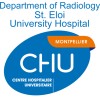
The Prognostic Significance of Premature Ventricular Complexes in Patients Without Structural Heart...
Premature Ventricular Complexes MultiplePremature Ventricular ContractionWith this project the investigators aim to investigate whether premature ventricular complexes (PVC) have a prognostic significance in persons without structural heart disease. Further the investigators look at the possible connection between PVC-morphology and clinical outcome and investigate whether advanced cardiac imaging-methods may identify subtle signs of heart disease in PVC-patients with normal findings at echocardiography.

Intra Hospital Mortality Risk Factors in Patients Admitted to Cardiac Intensive Care Units in 2017...
Heart DiseaseAcute Coronary Syndrome3 moreRetrospective, observational cohort study. Objectives: To identify intra hospital mortality risk factors in patients admitted admitted to cardiac intensive care units (CICU). The clinical main endpoint will be the observed percentage of deaths that occured during the year 2017 in french CICU. To identify the length of stay key determiners of patients admitted in french CICU. The study will use data from one of the french nationwide healthcare systems database (SNDS) : the national hospital discharge database (PMSI) to be precise.

STable Coronary Artery Diseases RegisTry
Chronic Ischemic Heart DiseaseObservational, prospective multicentric, national study, evaluating the diagnostic and therapeutic pathways of patient with cronic coronary artery disease followed in Italian cardiology centers.

Questionnaires Assessing the Quality of Life of Patients Treated for Coronary Heart Disease
Coronary Heart DiseaseCardiovascular disease remains the leading cause of death in Europe and worldwide. In 2014, they led to more than 4 million deaths in Europe, and coronary heart disease alone accounts for nearly 1.8 million deaths, or 20% of all deaths in Europe. However, mortality from cardiovascular disease and, especially, coronary heart disease has declined in recent decades. This has been made possible by improving the quality of care provided to patients. Several studies have been conducted to demonstrate this improvement in the quality of care, but they mainly measure the functional results of treatment, morbidity and mortality, survival and prolongation of life. However, patient-centered outcomes such as health-related quality of life outcomes (such as mental function, ability to resume activities of daily living, social relationship) are also considered important outcomes in the management and monitoring of these diseases. Some studies have shown that, even when other risks factors are controlled, a poor quality of life related to health is a prediction factor for morbidity and mortality in patients with coronary artery disease. Some studies have suggested that health-related quality of life should be strongly associated with lifestyle, co-morbidities, and mental function. Some factors have been identified as factors that may affect the quality of life in patients with coronary artery disease, including depression, anxiety, dyspnea and angina pectoris. Depression and anxiety were negatively associated with health-related quality of life in patients with cardiovascular disease. As for dyspnea, it has been shown that in stable patients who have had a myocardial infarction, its increase at 1 month after initiation of treatment is strongly associated with a decrease in the quality of life and with an increased risk of re-hospitalization and death. It is therefore important to measure these factors when the quality of life is assessed in patients with coronary heart disease. The importance of assessing quality of life is that the clinician and the patient often have different concerns: what the clinician considers to be a "successful procedure" is not always considered as such by the patient. Results related to quality of life (results rarely evaluated) are among the results that really interest the patient. Indeed, many patients consider the quality of additional years of life acquired as important as the lifespan, so the goal of today's medicine is to improve the quantity and quality of life of the additional years of life acquired. To ensure this improvement, the assessment of health-related quality of life should be integrated into the daily clinical practice of coronary heart disease management. The objective of our study is to evaluate the feasibility of this practice throughout the traject of care, by using several standardized questionnaires.

CT Data Collection Study
Cardiac DiseaseThe primary objective of this study is to gather chest CT images as part of routine clinical procedure from subjects with and without prior sternotomy to characterize the substernal space. Specifically, the study will provide references for physicians to better understand substernal anatomy.

Splanchnic and Renal Tissue Oxygenation During Enteral Feedings in Neonates With Patent Ductus Arteriosus...
InfantPremature3 morePatent ductus arteriosus (PDA) is a common problem in the neonatal intensive care unit and can be secondary to prematurity or congenital heart disease (CHD). PDA is the most common cardiovascular abnormality in preterm infants, and is seen in 55% of infants born at 28 weeks, and 1000 grams or less. In addition to producing heart failure and prolonged respiratory distress or ventilator dependence, PDA has been implicated in development of broncho-pulmonary dysplasia, interventricular hemorrhage, cerebral ischemia, and necrotizing enterocolitis (NEC). In an Israeli population study 5.6% of all very low birth weight infants (VLBW) were diagnosed with NEC, and 9.4% of VLBW infants with PDA were found to have NEC. In a retrospective analysis of neonates with CHD exposed to Prostaglandin E found that the odds of developing NEC increased in infants with single ventricle physiology, especially hypoplastic left heart syndrome. The proposed pathophysiological explanation of NEC and PDA is a result of "diastolic steal" where blood flows in reverse from the mesenteric arteries back into the aorta leading to compromised diastolic blood flow and intestinal hypo-perfusion. Prior studies have demonstrated that infants with a hemodynamically significant PDA have decreased diastolic flow velocity of the mesenteric and renal arteries when measured by Doppler ultrasound, and an attenuated intestinal blood flow response to feedings in the post prandial period compared to infants without PDA. Near Infrared Spectroscopy (NIRS) has also been used to assess regional oxygen saturations (rSO2) in tissues such as the brain, kidney and mesentery in premature infants with PDA. These studies demonstrated lower baseline oxygenation of these tissues in infants with hemodynamically significant PDA. These prior NIRS studies evaluated babies with a median gestational age at the time of study of 10 days or less. It is unknown if this alteration in saturations will persist in extubated neonates with PDA at 12 or more days of life on full enteral feedings. In the present study the investigators hypothesize that infants with a PDA, whether secondary to prematurity or ductal dependent CHD, will have decreased splanchnic and renal perfusion and rSO2 renal/splanchnic measurements will be decreased during times of increased metabolic demand such as enteral gavage feeding. To test this hypothesis the investigators have designed a prospective observational study utilizing NIRS to record regional saturations at baseline, during feedings, and after feedings for 48 hours.

Assessing Neurodevelopment in Congenital Heart Disease.
Congenital Heart DiseaseCongenital heart disease (CHD) is the most prevalent congenital malformation affecting 1 in 100 newborns per year. Children with CHD are a known risk population for brain injury, with neurodevelopmental alterations shown over time in up to 50% of cases. No adequate description exists of the type of neurocognitive anomalies or risk factors associated with CHD, and consequently no prognostic markers that may allow identification of high-risk cases are available.

Heart Rate Variability as a Predictor of Ischemic Heart Disease
Acute Coronary SyndromeIdentification of patients who are at highest risk for heart attack is an important task for emergency medicine physicians. Currently, physicians use a variety of different scoring systems to stratify their risk for having a heart attack. Heart rate variability (HRV) is a measure derived from noninvasive cardiac monitoring. This data is collected from a simple, non-invasive chest strap during a 10-minute recording session. The purpose of this proposal is to collect heart rate variability data on patients admitted to the emergency department with chest pain. The intent is to measure the association between heart rate variability and the various risk stratification scoring systems for chest pain.

Frailty in Children With Cardiac Disease
Pulmonary HypertensionHeart Failure1 moreFrailty is a complex biologic syndrome of diminished physiologic reserve that leads to decreased resistance to stressors and is associated with adverse health outcomes. The syndrome has been well studied in adults and is quantified by the Fried criteria, which are comprised of five components- slowness, weakness, self-reported exhaustion, shrinkage and diminished physical activity. The concept of frailty is novel in children. A study in young adult childhood cancer survivors demonstrated increased incidence of frailty in this population along with increased risk of morbidity and mortality. This suggests that frailty as a phenotype has relevance outside of the geriatric age group. Pediatric patients with single ventricle physiology, heart failure and pulmonary artery hypertension- all represent populations with significantly increased risk of mortality, morbidity and decreased quality of life. Currently, such patients are monitored outpatient by serial echocardiograms and blood work that only gives information about end organ damage. But there is no validated tool available to measure global infirmity in such children. Better understanding of the relevance and applicability of frailty in pediatrics may allow for identification of the most vulnerable pediatric cardiac patients and be of value in optimizing their clinical management and improving health outcomes.

A Comparative Study of Subjects Past Their Final Follow-ON Visit
CardiomyopathiesHeart Diseases1 moreA comparative study to follow subjects who received stem cell therapies three, five, seven, nine, and thirteen years after their follow-on visit. Subjects will be selected from a pool of previous Interdisciplinary Stem Cell Institute trial participants.
